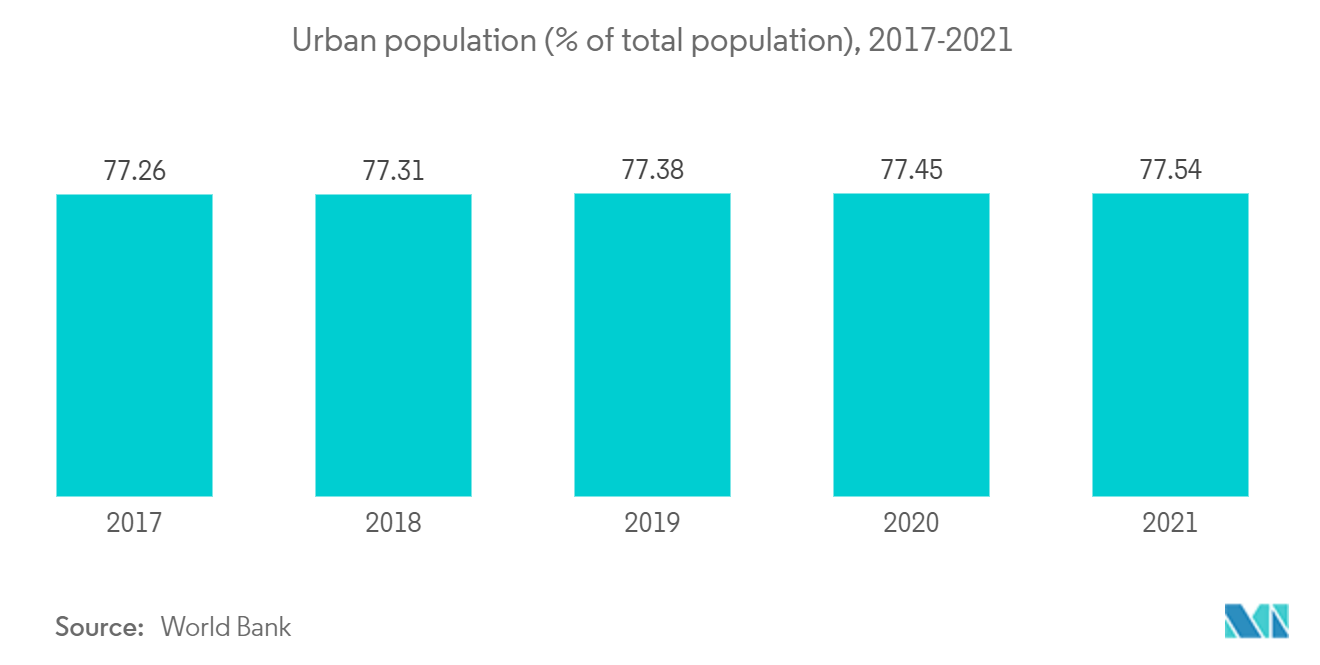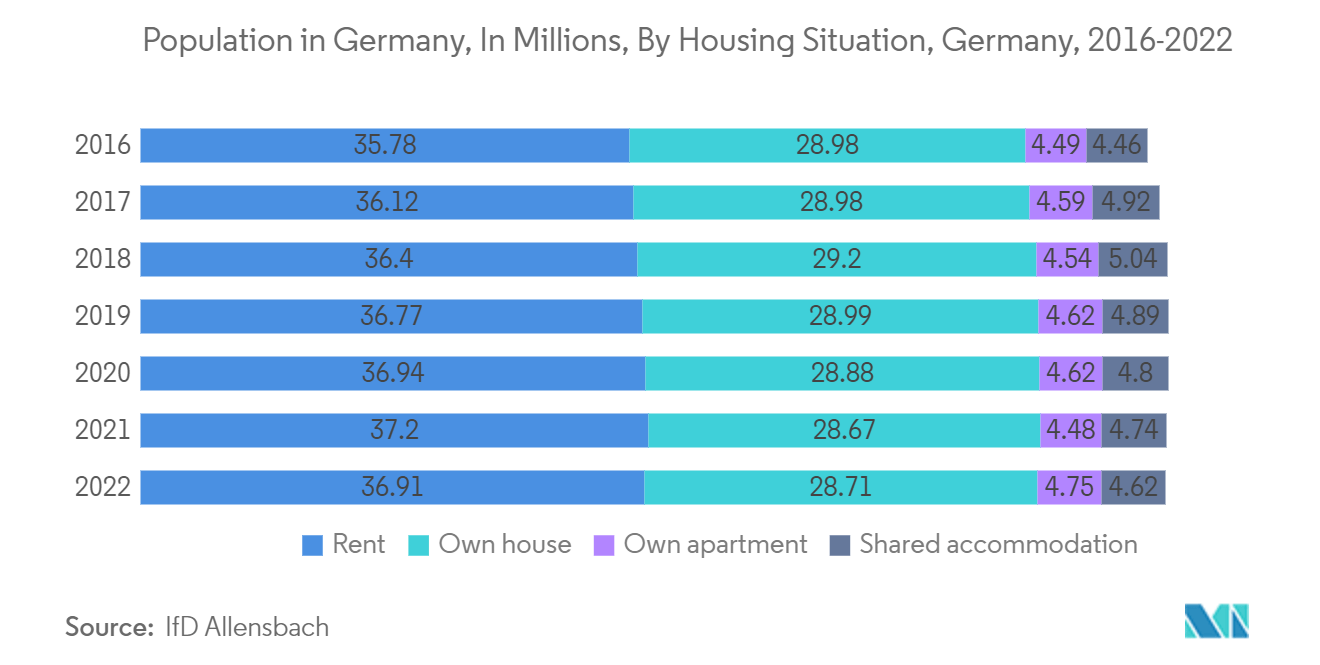Market Trends of Germany Manufactured Homes Industry
This section covers the major market trends shaping the Germany Manufactured Homes Market according to our research experts:
Rapid Urbanization in the Region is Driving the Market
According to the Industry Association, 78% of Germans would live in cities as of 2022. The main driver of German urbanization is industrial sector growth. At present, more people live in cities and urban areas in Germany than in the majority of other countries.
Rapid transformational expansion in Berlin brings both opportunities and difficulties for urban development planning. To keep Berlin a viable and international metropolis, the city government is dedicated to a culture of engagement in controlling growth. Additionally, the sustainable growth of the city is supported by the Urban Development Concept Berlin 2030.
As long as there are more individuals employed in offices and service-related enterprises, the urban expansion will continue. The Berlin metropolitan region, which houses the largest port, the greatest industrial hub, the most significant center for office work, and the country's capital, is by far the largest of them.
The third-largest region in Germany, Frankfurt/Rhein-Main (FRM), is well-known for its international airport, financial industry, stock market, and high-tech sector. The core region has experienced significant job growth and in-migration, and it is economically successful. Frankfurt Main plays a significant role, but the area is polycentric with a complex network of peri-urban centers and excellent open space. In 2022, the city had 791,000 residents, making it Germany's fifth most populated city, and 2.3 million people will live there in the city's urban area.

Demand for Housing is increasing in Germany.
Germany is the most populous nation in Europe, and around half of its people rent their homes. It also boasts the continent's largest multifamily market. Multifamily investments have increased since the coronavirus (COVID-19) outbreak began. The value of deals for properties with at least 50 residential units peaked in the 12 months leading up to January 2022 at approximately 54 billion euros, more than twice the level of prior investment activity, according to Statista.
Berlin is a reasonably affordable city to rent an apartment in when compared to other cities in Germany and Europe, making it a popular choice for young professionals and students. However, increasing rents and declining affordability have been upsetting tenants. Over 50% of Berliners supported the resocialization of housing held by firms owning 3,000 or more units, according to the results of a legally non-binding vote in 2021. In 2020, a rent freeze was briefly implemented before being found unlawful.
The evolution of the residential market and housing demand may be understood mostly through house prices, which are undoubtedly the most significant indication. The nominal housing price increased by nearly 14% between the third quarters of 2021 and 2022 in just one year. However, inflation has also been on the rise, so keeping this in account, the increase in housing prices was only 7%. Munich is renowned for having one of the most expensive housing markets in all of Germany.

